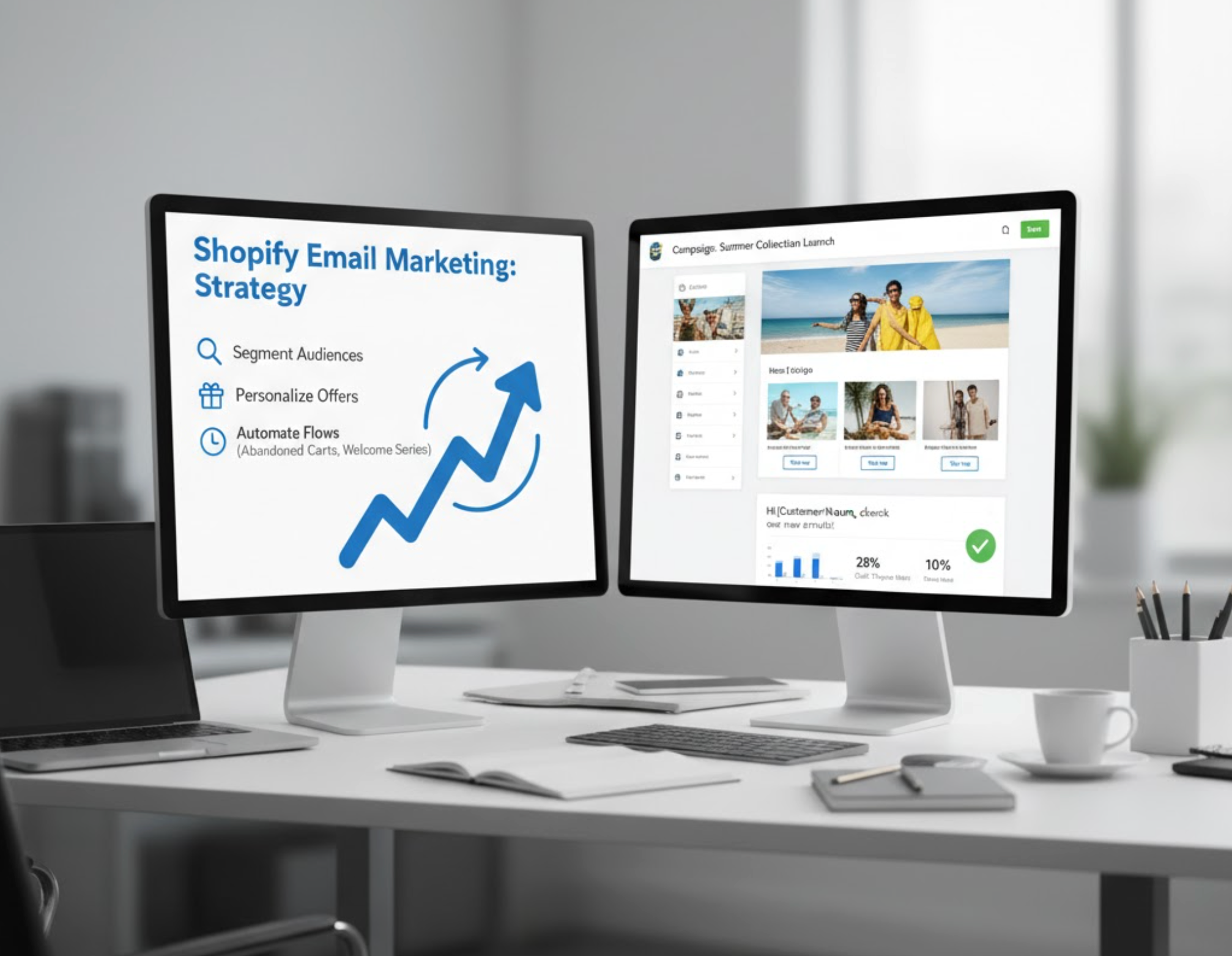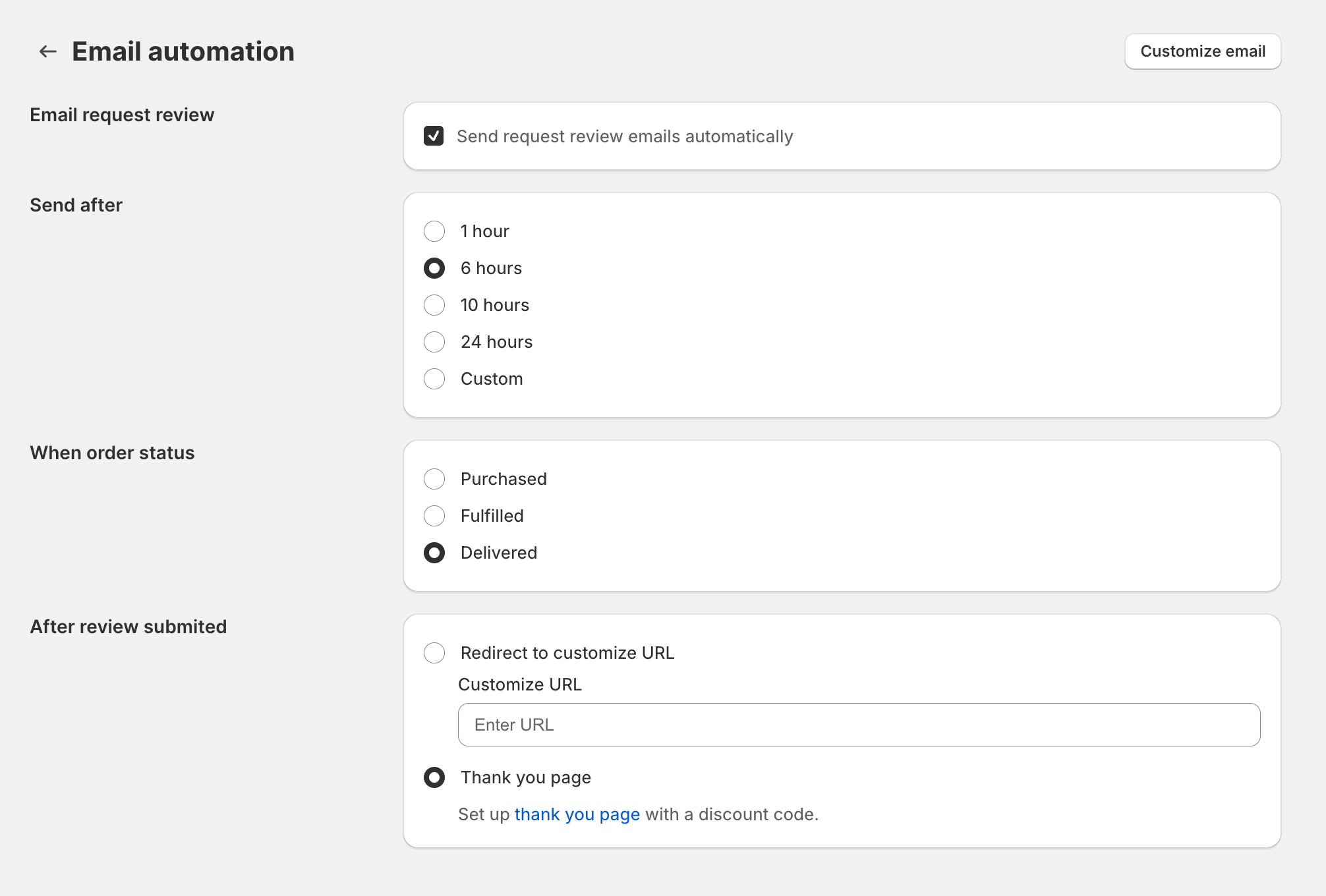
Email marketing remains one of the most powerful and cost-effective ways to engage customers, build loyalty, and drive sales. For Shopify store owners, the platform’s built-in email tools and integrations make it easy to create, send, and automate campaigns, even without a marketing background. However, to get the most out of Shopify’s email marketing tools, you need to use them strategically and consistently.
In this guide, we’ll explore how to use Shopify Email and its related integrations effectively to reach your customers, improve engagement, and boost your store’s conversion rate.
Shopify Email is designed to simplify email marketing for eCommerce stores. It allows you to create and send branded emails directly from your Shopify dashboard, no third-party software required. Because it’s connected to your store data, you can easily use customer purchase history, browsing behavior, and order details to create personalized campaigns that drive action.
For example, you can automatically send a thank-you email after a purchase or follow up when someone abandons their cart. This seamless connection between your store and your marketing campaigns helps you stay consistent and relevant.
Why it matters:
A strong email list is the foundation of every successful marketing campaign. Shopify helps you collect emails through multiple touchpoints, including your homepage, product pages, checkout process, and pop-ups. But simply collecting emails isn’t enough, segmentation turns that list into a revenue-generating asset.

Segmentation divides your subscribers into smaller groups based on specific traits or behaviors. This allows you to send the right message to the right people at the right time, which increases engagement and sales.
Smart segmentation ideas:
When your emails feel relevant, subscribers are more likely to open, click, and buy, turning your list into a valuable long-term asset.
Visual appeal is crucial in email marketing. Shopify Email includes a library of customizable templates you can adapt to your store’s branding, including logo, colors, and fonts, ensuring your emails look professional and consistent.
Your email design should reflect your brand identity while making it easy for readers to understand your message. Avoid clutter and make sure your content flows naturally, guiding readers toward your call to action (CTA).
Design best practices:
To boost trust and conversions, you can integrate Ryviu into your strategy, this app lets you include customer reviews and ratings directly in your emails. Featuring authentic feedback enhances credibility and encourages more clicks.
Customers expect personalized experiences that speak directly to their interests and habits. Shopify’s data-driven tools let you easily personalize emails using customer names, purchase history, and product preferences.
For instance, you can recommend similar products after a purchase or highlight items left in a customer’s cart. Personalized emails consistently outperform generic blasts, generating higher open rates and conversions.
Examples of personalization strategies:
By leveraging personalization, your emails become more than just promotions, they feel like curated experiences.

Automation is where Shopify Email really shines. Instead of manually sending each campaign, you can create workflows that automatically trigger emails based on customer actions or timelines.
For example, when someone signs up for your newsletter, Shopify can automatically send a welcome series introducing your brand and offering a first-purchase discount. If a customer abandons their cart, an automated reminder can recover that lost sale.
Key automated email types to set up:
With automation, you can run a powerful email strategy even while you sleep.
To improve your results, you need to measure them. Shopify Email includes built-in analytics that show how your campaigns are performing in real-time. You can view open rates, click-through rates, and revenue generated from each email.
Regularly reviewing these metrics helps you understand what resonates with your audience. You can experiment with different subject lines, visuals, send times, and CTAs to see what performs best.
Metrics to track and optimize:
Always treat data as your guide. Continuous testing and refinement will keep your campaigns fresh and effective.
Shopify Email works even better when combined with other channels. Multi-channel marketing ensures your brand stays visible and consistent across different platforms, increasing touchpoints and conversions.
Powerful channel combinations:
Using Shopify Email alongside integrations ensures seamless coordination between email, SMS, and social marketing efforts. When customers receive a consistent message across channels, they’re more likely to trust and act on your offers.
Consistency builds recognition and reliability. Stick to a regular email schedule, whether weekly, biweekly, or monthly, so your subscribers know when to expect updates. However, avoid over-sending, as too many emails can cause fatigue or unsubscribes.
Equally important is staying compliant with email marketing laws. Shopify Email automatically includes unsubscribe links, but it’s your responsibility to ensure all messages follow privacy regulations such as GDPR, CAN-SPAM, and CASL.
Best practices for consistency and compliance:
Compliance not only protects your business but also builds trust with your audience.
Even experienced marketers rely on experimentation to find what works best. A/B testing is one of the most effective ways to fine-tune your campaigns. You can test different subject lines, images, layouts, or CTAs to see which version gets more engagement.
Shopify Email and integrations like Klaviyo make A/B testing simple, allowing you to send two versions of an email to small segments of your list and automatically select the winner for the rest of your subscribers.
Testing ideas:
By continuously testing, you’ll learn more about your audience and refine your strategy for better results over time.
Beyond promotions, email is a powerful relationship-building tool. When used thoughtfully, it helps your brand connect with customers on a deeper level. Send thank-you messages, celebrate milestones, and provide valuable content like styling tips or product guides.
Adding a human touch to your emails makes your brand feel approachable and authentic. This emotional connection leads to higher loyalty and repeat purchases.
Relationship-building email ideas:
When customers feel appreciated, they’re more likely to stick around, and even become advocates for your brand.
Shopify Email marketing tools give store owners everything needed to run professional, data-driven campaigns without relying on external software. From segmentation and automation to personalization and analytics, the platform makes it simple to connect with your audience in meaningful ways.
To use Shopify email marketing tools effectively, focus on three key principles: personalization, automation, and continuous improvement. Besides, you can integrate trusted apps like Ryviu to extend your capabilities and make your campaigns even more impactful.
Start small, create a welcome email or abandoned cart series, then scale your strategy as you grow. With consistent effort, your emails can transform from simple messages into powerful conversion drivers that strengthen relationships, build loyalty, and grow your Shopify store sustainably.